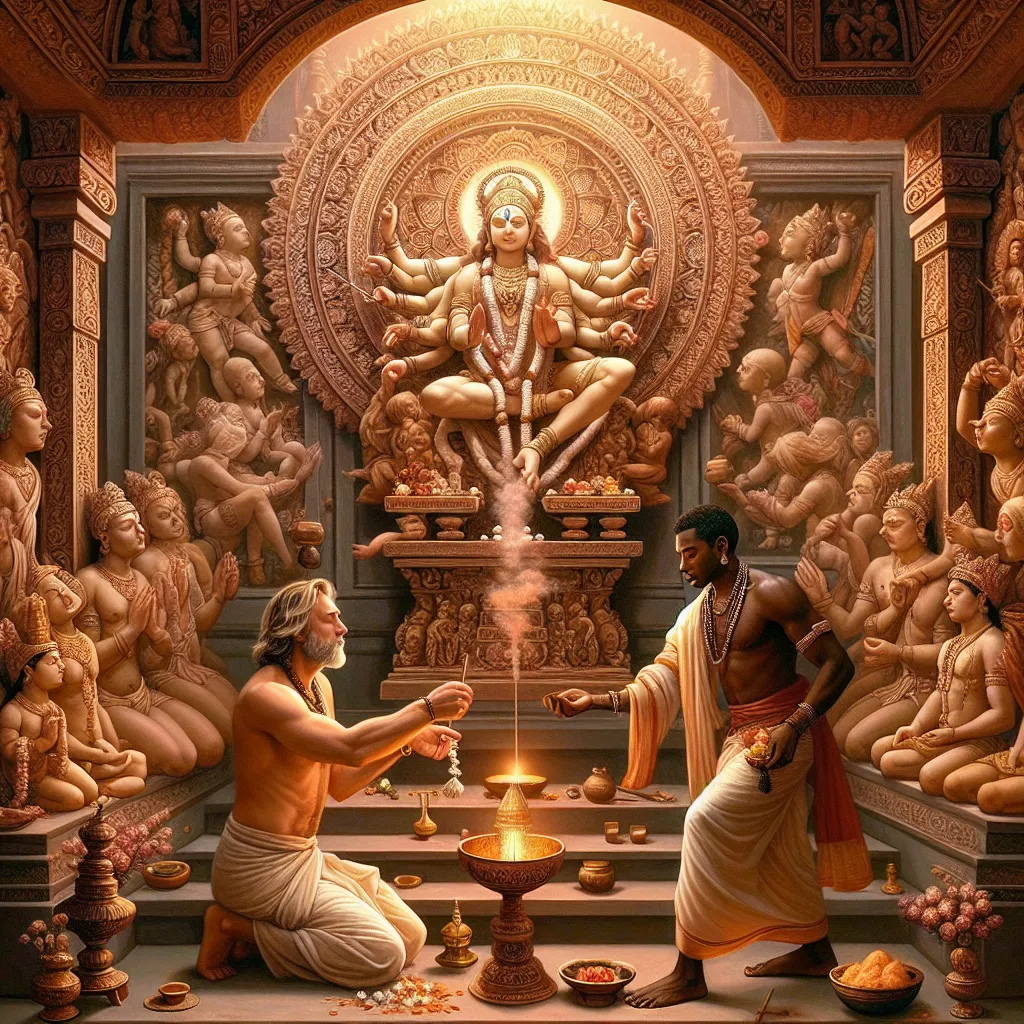
- Published on
- Authors

- Name
- You
The Role of Puja: Ritual Worship in Hinduism
Puja, a ritual worship in Hinduism, is a profound and intricate practice that bridges the human with the divine, blending elements of devotion, reverence, and cosmic order. This article delves into the components, significance, and mystical essence of puja, making it enjoyable and easy to grasp for all audiences.
Components of Puja
Puja is a multi-faceted ritual encompassing various elements. Here is a detailed view of its main components:
| Component | Description |
|---|---|
| Dhyana | Meditative focus to mentally connect with the deity. |
| Avahana | Invoking the deity to be present within the holy space. |
| Asana | Offering a seat to the deity. |
| Padya | Washing the deity’s feet, symbolizing purity. |
| Arghya | Offering water to the deity for washing hands and mouth. |
| Snaana | Bathing the deity with substances like milk, honey, and ghee. |
| Vastra | Dressing the deity in beautiful clothes. |
| Upaveeda | Adorning the deity with a sacred thread. |
| Aachamana | Offering purified water for deity to sip. |
| Bhoga | Presenting food (naivedya) to the deity. |
| Arati | Performing the light ceremony with lamps and camphor. |
| Mantra | Chanting of divine mantras to invite blessings. |
Mystical Significance of Puja
- Spiritual Harmony: Puja creates a serene environment where individuals can meditate and feel connected to the larger cosmos, fostering inner peace and spiritual alignment.
- Invoking Divine Presence: The meticulous invocations and offerings in puja make the divine tangible, drawing the deity into the physical realm and facilitating a divine-human dialogue.
- Karma and Dharma: Performing puja is an act of good karma (actions) that aligns with one's dharma (duties), paving the way for spiritual growth and righteousness.
Advanced Science and Mystical Wisdom
Quantum Resonance in Mantras
Recent scientific explorations into the physics of sound reveal that chanting mantras, a key component of puja, creates specific frequencies that resonate with the quantum vibrations of the universe. This resonance can alter human brainwaves, inducing states of calmness and heightened awareness. The vibrational energy in mantras engages with the microcosm (individual mind) and macrocosm (universal consciousness), hinting at an ancient understanding of quantum theory.
Psycho-Spiritual Benefits
From a psychological standpoint, the ritualistic patterns of puja offer a sense of order and predictability, which can be profoundly calming. The sensory engagement (sight, sound, smell, touch, taste) during puja invokes a holistic stimulation that can reduce stress and enhance overall well-being by triggering the brain's reward system.
Conclusion
Puja, the ritual worship in Hinduism, is a beautiful amalgamation of devotion and cosmic principles, with each element meticulously designed to honor the divine and align the devotee with universal energies. When scrutinized through the lens of modern science, the ancient wisdom embedded in puja displays its timeless relevance and profound impact on human well-being.
By blending exquisite mysticism with scientific curiosity, we find that rituals such as puja are not merely archaic traditions but are profound practices embedded with universal truths that continue to inspire and uplift humanity.
